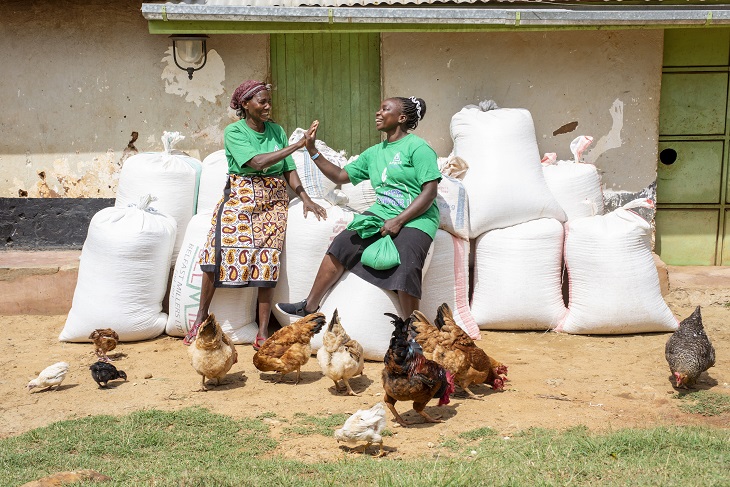By Mwenda Kimathi and Brian Kimutai
With the adverse consequences of climate change becoming more evident, the time is ripe for a national conversation to align mitigative roles that government, insurance, finance, and technology companies in Africa must play to make agriculture resilient.
Data from the Food and Agriculture Organisation shows from 2008 to 2018, Kes 3.6 trillion (USD 30 billion) was lost in Africa due to declines in crop and livestock production following extreme weather conditions.
Considering that approximately 60 percent of the active population in Africa engages in agriculture as their mainstay activity, without doubt, they are greatly exposed to the worst perils of climate change.
Across the globe, the highest agricultural insurance penetration rates are found in countries that have large nationally subsidized schemes such as the United States and Canada, where the government subsidizes a substantial amount of agricultural insurance premiums which is a contrast to Africa and other low-income countries.
But this sorry scenario is slowly being redefined by deliberate measures taken by various governments to spur agri-insurance adoption. The 2020 Association of Kenya Insurers (AKI) Insurance Industry Report indicates that total gross written premiums in 2020 in agriculture insurance amounted to Kes 1.09 billion, representing a significant 66 percent increase from Kes 659 million in 2019.
Similarly, crop insurance premiums more than doubled from Kes 300 million in 2019 to Kes 636 million in 2020 while livestock insurance premiums grew by 28 percent from Kes 355 million in 2019 to Kes 454 million in 2020.
For example, last year, more than 5,000 maize farmers in Nandi County received compensation of Kes 12 million (USD 100,000) for crop losses during the 2021 season. It was the first-time farmers in the region had received compensation for losses due to climate change. Other programs include the government-led comprehensive Crop Insurance Program (CIP).
The government is also financing the Kenya Livestock Insurance Program (KLIP) in eight arid- and semi-arid (ASAL) counties where the government pays the full premium for eligible households covered by the program.
To expand the potential reach of agricultural insurance to smallholder farmers, insurance products must be attractive, accessible, and affordable. Products such as index-based, group-based, and technology-driven agricultural insurance products should be adopted to encourage insurance uptake in rural areas.
Pairing digital innovations with agricultural insurance could help smallholder farmers easily access insurance at affordable premiums by reducing transaction costs. Additionally, micro insurance, now fully integrated into the Insurance Act, presents one of the most effective ways to mitigate agricultural risks to small-scale farmers by safeguarding their investments.
Although these factors could grow agri-insurance adoption, there are several challenges hindering its expansion in African markets. Agricultural shocks present a difficult risk to insurers as many crop-related risks are brought about by weather and natural conditions which are sometimes unpredictable.
These risks are realized over a large geographical area, making it difficult for insurers to diversify. Moreover, widespread animal diseases may affect pastoralists, generating several knock-on effects. A large agricultural risk portfolio is therefore susceptible to major losses.
Secondly, government-sanctioned disaster payments outside an established resilience program could have the unintended consequence of discouraging farmers from taking agriculture insurance.
Additionally, despite our mature reinsurance market, given the modest size of agriculture premiums, many reinsurer premium threshold requirements may be beyond the reach of smaller insurers. Since international reinsurance markets not only provide reinsurance but also technical expertise in such a niche line of business, local markets suffer a double disadvantage.
Coincidentally, with agricultural risk assessment being complex, particularly on the impact of extreme natural events on crops and livestock losses, a lack of historical data on agricultural risks and the randomness of risk occurrence prevents proper risk modeling.
This often leads to inadequate pricing of agricultural insurance products. With insurance companies having limited experience in agricultural insurance, paired with the complexity of the risk class, highly specialized skills are required, which could disincentivize insurer investment.
Smallholder and low-income farmer populations exhaust most of their incomes for necessities such as food and education, but for those who do buy insurance, health and life insurance are usually given priority. This unquestionably inhibits the development of agri-insurance
To mitigate this, it is important that financial institutions increase farmers’ access to credit. It is both in the farmers’ and lending institutions’ best interest to take up insurance as insurance reduces the risk of loan default in the event of catastrophic production losses. Resultantly, insured farmers could even enjoy reduced borrowing costs due to their lower risk.
Mwenda Kimathi (mwenda.kimathi@Minet.co.ke) is Minet Kenya Business Intelligence & Analytics Manager and Brian Kimutai (ciasupport@minet.co.ke) is part of Minet Kenya’s Centre for Innovation and Analytics – CIA

